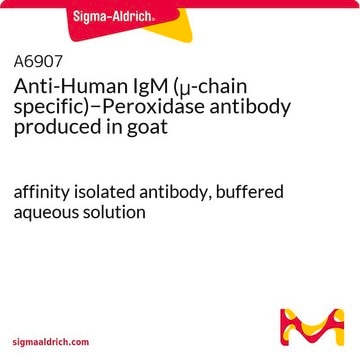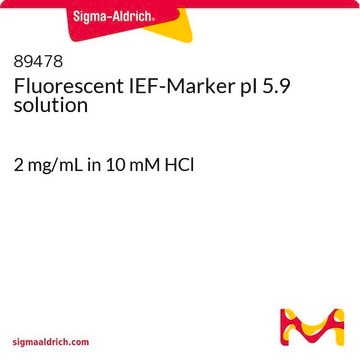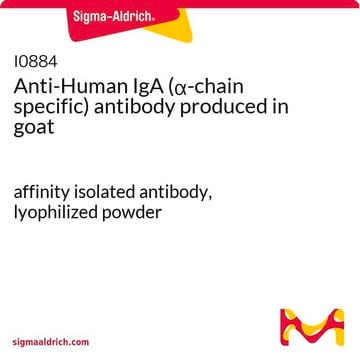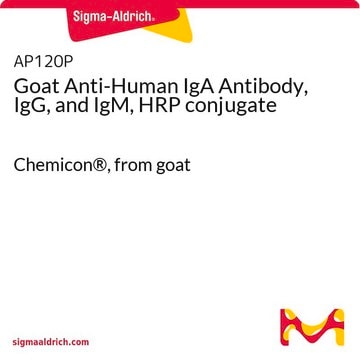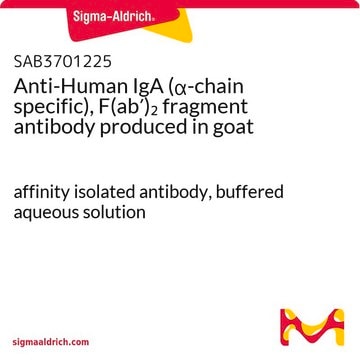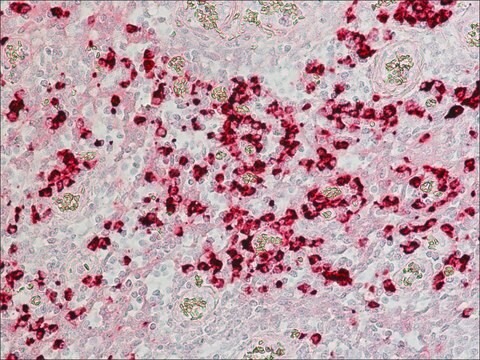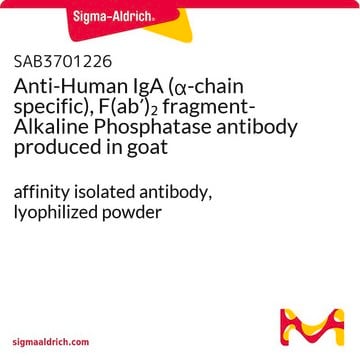A0295
Anti-Human IgA (α-chain specific)−Peroxidase antibody produced in goat
affinity isolated antibody
Synonym(s):
Goat Anti-Human IgA (α-chain specific)−HRP
About This Item
Recommended Products
biological source
goat
conjugate
peroxidase conjugate
antibody form
affinity isolated antibody
antibody product type
secondary antibodies
clone
polyclonal
form
buffered aqueous solution
species reactivity
human
concentration
4-11 mg/mL
technique(s)
direct ELISA: 1:50,000
dot blot: 1:80,000
immunohistochemistry (formalin-fixed, paraffin-embedded sections): 1:100
western blot: suitable
shipped in
dry ice
storage temp.
−20°C
target post-translational modification
unmodified
Looking for similar products? Visit Product Comparison Guide
Related Categories
General description
Specificity
Immunogen
Application
- Enzyme linked immunosorbent assays (ELISA) at dilution of 1:3,000 and 1: 1,600
- Tissue anti-transglutaminase antibody (tTG) assay at a dilution of 1:1,000
- Dot blot: a minimum working dilution of 1:80,000 was determined in a direct chemiluminescence assay using 10ng human IgA/dot. Luminol plus enhancer was used as substrate.
- Immunohistology using formalin-fixed, paraffin-embedded sections at a dilution of 1:100
- Transcytosis assay of dimeric IgA (D-IgA)
- Western Blotting
Biochem/physiol Actions
Physical form
Preparation Note
Storage and Stability
Disclaimer
Not finding the right product?
Try our Product Selector Tool.
Storage Class Code
12 - Non Combustible Liquids
WGK
WGK 2
Certificates of Analysis (COA)
Search for Certificates of Analysis (COA) by entering the products Lot/Batch Number. Lot and Batch Numbers can be found on a product’s label following the words ‘Lot’ or ‘Batch’.
Already Own This Product?
Find documentation for the products that you have recently purchased in the Document Library.
Customers Also Viewed
Our team of scientists has experience in all areas of research including Life Science, Material Science, Chemical Synthesis, Chromatography, Analytical and many others.
Contact Technical Service